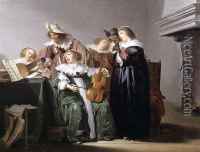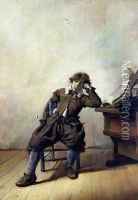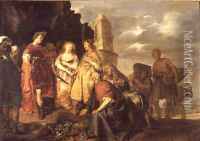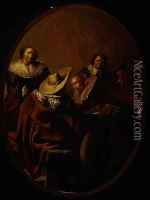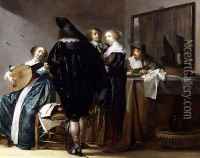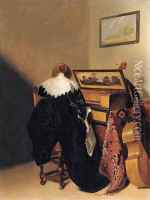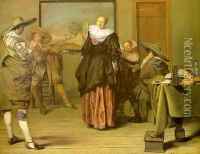Pieter Codde Paintings
Pieter Codde was a Dutch painter, draughtsman, and poet born in Amsterdam in 1599. He is best known for his genre paintings, often depicting merry companies and musicians, which were in vogue in the Dutch Golden Age. Codde was also a part of the group of artists known as the Amsterdam 'Bentvueghels,' a society of mostly Dutch and Flemish artists working in Rome.
Codde's work is characterized by fine, detailed brushwork and a muted palette, reflecting the influence of the earlier Mannerist style as well as the emerging tonal qualities of the Dutch Golden Age. He received his artistic training from Frans Hals, one of the most celebrated portraitists of the time. This training is evident in Codde's skillful rendering of textures and his attention to the play of light and shadow.
The artist's career was somewhat overshadowed by more prominent painters of his time, such as Rembrandt and Hals himself. Nonetheless, Codde enjoyed moderate success and was commissioned to complete part of a large civic guard painting after the original artist, Cornelis van der Voort, passed away. This work was entitled 'The Meagre Company' and was completed in collaboration with another artist, Willem Duyster.
Codde's genre scenes often depict elegant figures in interior settings, engaging in music-making, dancing, or enjoying conversation. These themes reflect the cultural interests of the Dutch middle class during the 17th century, who were Codde's primary patrons. His paintings resonate with an air of quietude and a sense of the fleeting nature of pleasure.
Despite his accomplishments as a painter, Codde's later years were marked by financial difficulties. He continued to produce art, but his work never achieved the high acclaim or the financial success of some of his contemporaries. Pieter Codde died in Amsterdam in 1678. Today, his works can be found in various museums and collections, where they serve as a testament to the rich artistic culture of the Dutch Golden Age.
